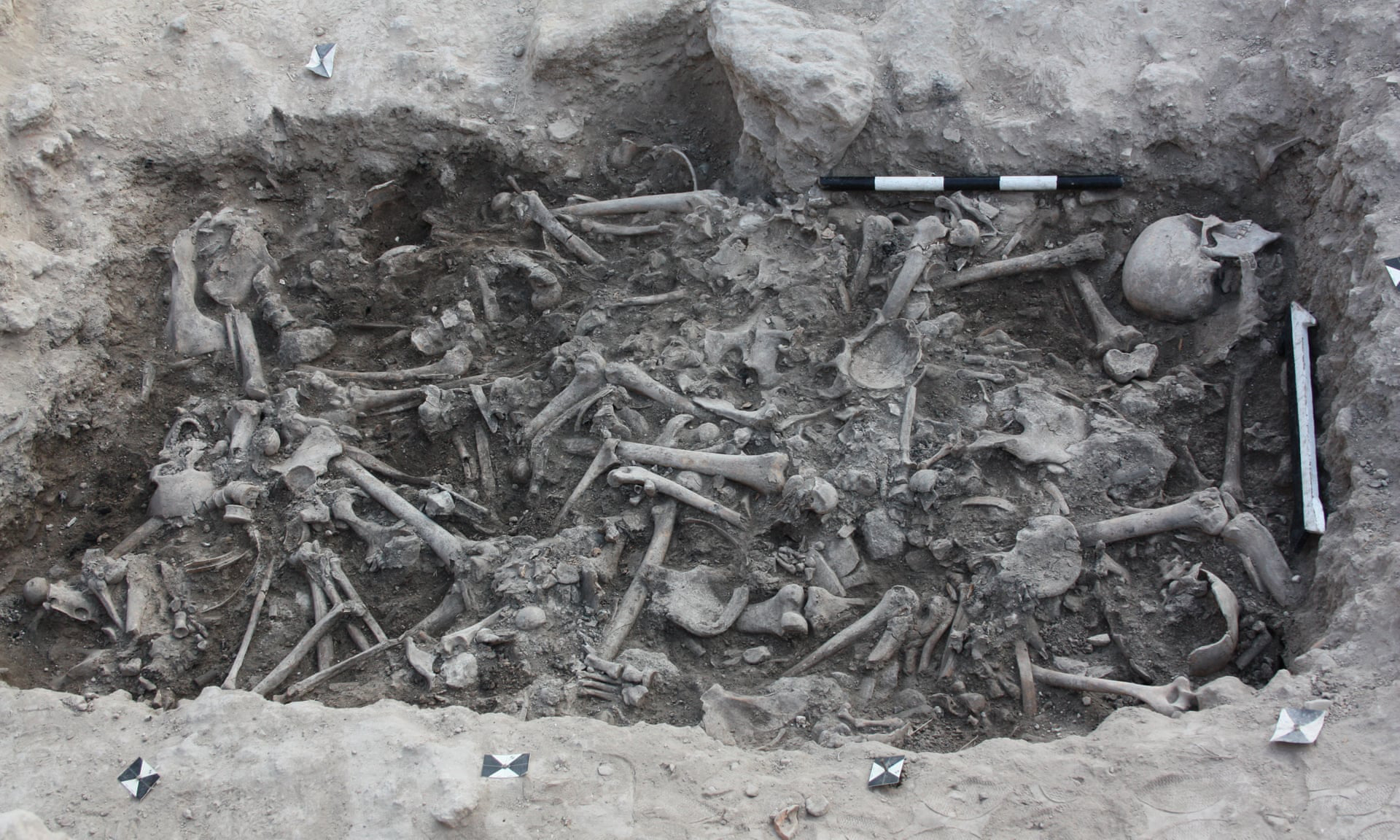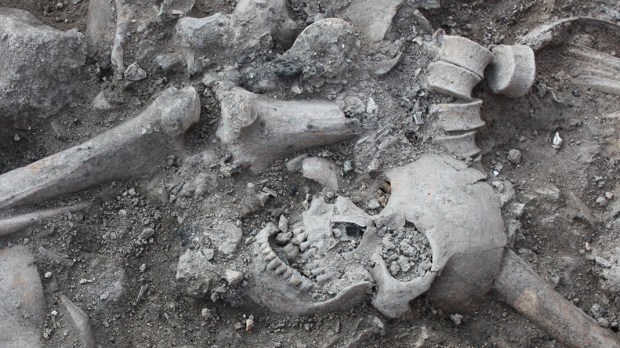Lenten Campaign 2025
This content is free of charge, as are all our articles.
Support us with a donation that is tax-deductible and enable us to continue to reach millions of readers.
Archaeologists digging at a site in Sidon, Lebanon, have discovered a small burial pit with nine skeletons dated to the 13th century. The remains were accompanied by an isolated skull, which they believe could have been catapulted into an enemy camp in order to spread disease and break the foes’ resolve.
All of the unearthed skeletons were male, and researchers were able to determine from the damage to the skulls and limbs that they most likely died in battle. After they died, their bodies were piled in the pit and burned, before burial. From the European shoe buckles, a coin and carbon-14 dating analysis, researchers believe the remains are those of Crusaders.

Researchers from the Wellcome Sanger Institute determined the skull belonged to an individual of mixed European and near Eastern descent. This suggests his father was a Crusader who met his mother while fighting in the Holy Land.
Although historical sources have spoken about Crusaders marrying local women and converting them to Christianity — and the rape of enemy women is common to wars in all ages and cultures — this is the first study to confirm the genetic mixing. It is possible the disease-carrying skull was that of a son of a Crusader, who joined his father’s efforts when he came of age.
Dr Marc Haber, from the Wellcome Sanger Institute, told The Telegraph that this genetic melding was short-lived, as today the Lebanese population shows few traces of European ancestry.
“The Crusaders traveled to the near East and had relationships with the local people, with their sons later joining to fight their cause. However, after the fighting had finished, the mixed generation married into the local population and the genetic traces of the Crusaders were quickly lost.”
Dr Chris Tyler-Smith, also from the Institute, praised the find as an example of how genetic data can help us to confirm Historical sources.
“Historical records are often very fragmentary and potentially very biased. But genetics gives us a complementary approach that can confirm some of the things that we read about in history and tell us about things that are not recorded in the historical records that we have. “And as this approach is adopted by historians and archaeologists as a part of their field, I think it will only become more and more enriching.”
At this point it is unclear exactly what disease was spread by the skull. As the remains are thought to be from the Crusaders, it is just as likely that the skull was used against them as for them. If the skull was from a Crusader, it is unlikely his brethren would disturb his remains in such a way, unless he was found to be treacherous, or otherwise dishonored.

